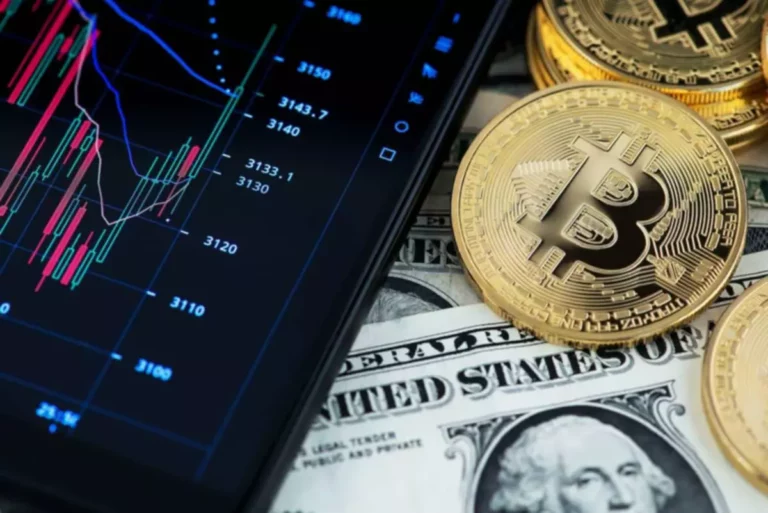Market makers are responsible for the vast majority of trading volumes that occur in the Forex industry. Market makers buy and sell millions or even billions of USDs, Euros, and other currencies. Breaks between prices are called gaps that frequently occur at the beginning of a trading session. Low liquidity leads to the possibility of manipulations when traders influence the quotes. Integral is a company involved with the development and operation of an FX Grid, which is multi-sided trading technology that connects active market participants with several major sources of FX liquidity.
For example, if an institution such as bank receives a very large order, this transaction could move the market significantly in the short term. A trader stands a better chance of making profitable trades in currency pairs that have higher liquidity. Higher liquidity in a currency pair is reflected in how tight the bid/offer spread is and how fast and by how much the market moves in reaction to a large order. An individual trader, unless they are extremely wealthy and trade in large amounts, will never get direct access to a Tier 1 liquidity provider. Instead, their access to the forex market will be provided by an online broker or by a secondary liquidity provider like a small bank or payments company who accepts retail clients.
Liquidity by sector and market
Liquidity providers are market brokers or institutions who act as a professional market makers, working at both ends of the currency transactions. The top liquidity providers in the foreign exchange market are known as Tier 1 liquidity providers. These comprise of the largest investment banks with large FOREX departments who provide buy/sell quotes for the FOREX pairs that they make markets in. An individual trader is not able to get direct access to a Tier 1 liquidity provider. FOREX brokers usually connect with a number of liquidity providers to obtain better dealing rates and spreads.
Swissquote combines competitive pricing with innovative technology, providing clients with the comprehensive packages that they need when they seek a reputable liquidity provider. Global Prime is an Australian-based forex and CFD provider that specialises in low latency connections to Tier 1 bank liquidity as well as several ECNs. Global prime specialises in building and providing customized liquidity that is sourced from Tier 1 providers, regional banks, non-banks, and ECNs that have proprietary algorithms. X Open Hub provides institutional-grade liquidity on over 3,000 different financial instruments include forex, cryptocurrencies, indices, commodities, shares, and several others. FXCM Pro has a dedicated liquidity management team that can source some of the most efficient liquidity providers and partnering venues, effortlessly allowing it to match every need of clients. Low liquidity is often experienced in several different markets, especially the real estate market, with transactions consisting of more than two- or five-day settlement periods, with other transactions taking years.
LPs connect brokerage businesses to market makers, increasing the liquidity of their order books. The United Nations recognizes 180 fiat currencies that are used throughout the world. When related to the Forex market, those currencies may form thousands of trading pairs, while the top-10 list covers 83.14% of overall trading volumes.
That said, a market is considered to be liquid when assets can be bought and sold easily, with a significant amount of trading activity. Forex liquidity providers are very important as they make it easier for trading to remain active and profitable. Having greater liquidity makes prices competitive and keeps trading flowing.
Figure #1 – This graphic shows the company logos of many of the major forex market liquidity providers that actively make markets in a variety of forex currency pairs to their professional counterparties and clients. This gives the Tier 1 provider a significant opportunity to make profitable trades. It revolves around the
ease and speed with which currency pairs can be bought or sold without causing
significant price fluctuations. When the forex market exhibits https://www.xcritical.in/ high liquidity,
traders can swiftly execute trades at prices that reflect the current market
conditions. On the other hand, low liquidity can result in challenges such as
wider spreads and higher transaction costs, making it more difficult to enter
or exit positions without impacting market prices. A liquidity provider is a market player responsible for the creation of liquidity pools where funds, banks, and other financial institutions are united.
FAQ and More on Forex Brokers liquidity providers
YaMarkets has a wide range of
products, a user-friendly platform, competitive spreads, and a reliable
customer support team. Liquidity providers use technology to offer two-way prices for currency pairs. They use algorithms to monitor the market and adjust their prices accordingly.
OPIXTECH Receives Esteemed “Best Multi-Asset Liquidity Provider … – Digital Journal
OPIXTECH Receives Esteemed “Best Multi-Asset Liquidity Provider ….
Posted: Fri, 15 Sep 2023 05:17:05 GMT [source]
Perhaps the best-known role played by those who provide liquidity to the forex market, often called liquidity providers, is to act as a professional market marker who makes exchange rate quotations to others. Still, other forex market participants can also take an important role in increasing market liquidity by boosting trading volume with their transactions. Indirect liquidity is provided through interbank networks, where LPs can access other liquidity pools and market makers. LPs use complex algorithms to determine the best prices and execution speeds for their clients, often leveraging different liquidity pools simultaneously. This ensures that traders can access the best prices and execution speeds, even during periods of high market volatility.
Exotic currency pairs from emerging or smaller economies are typically less liquid. The spreads are broader and hold a higher potential for substantial slippage during execution. Slippage refers to price changes between the order placement and execution. Reputable online brokers typically use at least some Tier 1 liquidity providers to fill most of their orders. These types of institutions only enter into relationships with providers that are financially sound to help reduce their counterparty risk.
LPs use advanced trading algorithms and risk management tools to ensure that they can offer the best prices and execution speeds to their clients. Tier-2 liquidity providers, that is online brokers and other smaller firms, operate a B2C business model. They deal with the big players and provide forex services to retail traders. Some brokers act as market makers and provide liquidity for their customers directly without passing on the risk to the tier-1 LPs. There are several benefits that liquidity providers bring to the markets they serve. Tighter spreads are given when significant liquidity pools are present.
Liquidity providers in the forex market, like banks, hedge funds, and market-making firms, actively offer bid and ask prices to facilitate trading ensure smooth and efficient market flow. By providing liquidity, they also create an ideal environment for traders to make their moves and seize opportunities easily. Forex liquidity is maintained by major banks, hedge funds, and other largest financial institutions.

Tier 2 liquidity providers are sometimes forex brokers who are large, well-known, and reliable enough to aggregate orders from smaller brokers. If a forex broker does not generate enough volumes to ask for liquidity from a Tier-1 firm, they use Tier-2 liquidity providers. Tier-2 Liquidity providers, also known as Prime of Prime (PoP) or liquidity aggregators, act as a bridge between smaller market participants and Tier-1 liquidity providers. These financial liquidity provider in forex institutions are in the perfect position to reduce operational and trading costs while simultaneously increasing trading volumes and revenue. They do this by using tailor-made services as well as Tier 1 liquidity solutions provided by Swissquote. Core liquidity providers are typically institutions or banks that can underwrite or finance equity or debt transactions, allowing them to make a market or to assist in the trading of different securities.
- The company cannot buy Euros from thin air – other currencies are applied (e.g., USD).
- Reading the counterparty, or showing a lower bid if they think the counterparty is a seller or a higher offer if they think the counterparty is a buyer is a pretty common practice among forex market makers.
- This is one of the reasons that many larger forex traders tend to use ECN/STP forex brokers.
- Liquidity providers also offer liquidity pools, which are pools of funds that traders can use to execute their trades.
A real estate transaction typically involves much more than a two or five day settlement period, with some real estate transactions taking years to complete. Traders must consider
these factors when planning their trading activities, as understanding the
dynamics of liquidity can help optimize trade execution and manage potential
risks more effectively. The financial products offered by the promoted companies carry a high level of risk and can result in the loss of all your funds. There are other liquid pairs, but the ones listed are among the most liquid.
